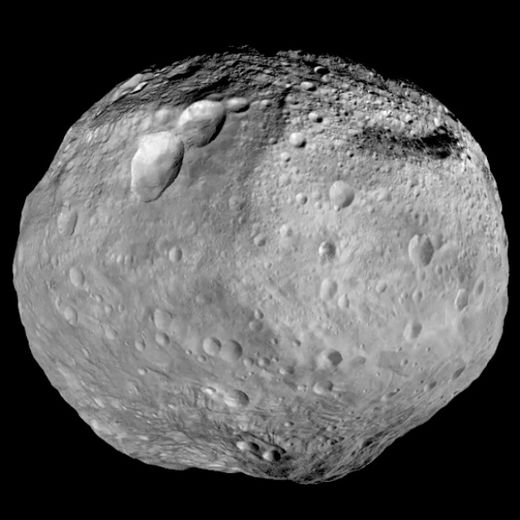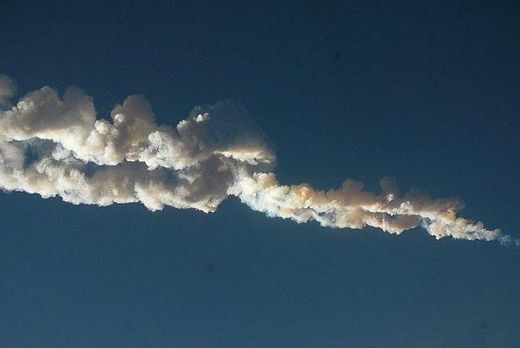Definitely a heads-up situation: According to NASA’s Near Earth Object Program, there will be 43 asteroids flying close to Earth in January and 25 in February. In March, the number further drops to 15.
Tag Archives: asteroids
Risk of asteroid impacts may be more common than expected
They are waking up to reality a day late and a dollar short.
Risk of asteroid impacts may be more common than expected
Rather than expecting an impact every 150 years, researchers believe the risks could be ten times greater.
Researchers warn that the risk of space rocks, like the one that exploded over Russia in February 2013, hitting the Earth is ten times larger than previously estimated.
Using videos from security and dashboard cameras, researchers were able to reconstruct the asteroid and its trajectory through the atmosphere.
Three separate papers out this week agree that the asteroid, which caused an intense flash of blinding light at daybreak on Feb. 15 near the Russian city of Chelyabinsk, was nearly twice as heavy as earlier estimated and had the explosive power of 500,000 tons of TNT.
“Luckily, most of the kinetic energy was absorbed by the atmosphere,” said Jiri Borovicka, an asteroid researcher at the Astronomical Institute near Prague and lead author on a study published in Nature. “A more solid rock that might have blasted closer to the ground would have caused considerably more damage.”
According to Borovicka, the asteroid approached the Earth from a region in the sky that is inaccessible to ground telescopes. The asteroid should have been visible six weeks before the impact, but only during the day, when the sky is too bright to spot objects of its size.
Peter Brown, a planetary scientist at the University of Western Ontario and lead author on a separate paper published in Nature, said that previous models suggested that asteroids like the Chelyabinsk asteroid would hit the earth once every 150 years. But looking at the number of observed impacts over the last 20 years suggests the impact risk could be substantially higher.
Brown suggests that a sensible response to the Chelyabinsk asteroid is scanning the visible sky with asteroid detection and early-warning system like ATLAS, which is currently being developed in Hawaii.
Back from the dead: Jupiter’s gravitational pull breathes life into ‘graveyard’ of comets that burned out millions of years ago
A ‘graveyard of comets’ has been found by astronomers in the asteroid belt between Mars and Jupiter.
And, to the surprise of astronomers, a number of comets in this graveyard have come back to life after being dormant for what could have been thousands or even millions of years.
The findings, by a Colombian team, contradict the long-standing view that the main asteroid belt was once populated by thousands of comets which ultimately burned out as they aged.
Over the past ten years researchers have found 12 active comets in the asteroid belt.
The mystery of the reactivated comets led the Colombian team to investigate their origin.
Their findings suggests that these comets came back to life after moving closer to the sun.
Why is it that astronomers keep getting surprised? Maybe they need to re-think their theoretical foundations. This phenomenon, taken together with a whole lot of other stuff, suggests that something big is happening to our solar system and maybe we need to figure it out pretty quick?
Meteorites, Asteroids, and Comets: Damages, Disasters, Injuries, Deaths, and Very Close Calls
Be sure to check out my list of meteorite, asteroid, and comet events on SOTT.net. We’ve got it updated to this year, including yearly summaries, statistics, and descriptions of significant celestial events going back 13,000 years!
2012 (Summary) – Worldwide: In 2012, SOTT.net archived 136 fireball reports, 24 unexplained sonic booms (at least 3 of which were accompanied by ground tremors or earthquakes), and 16 recovered meteorites. The biggest meteorite fragment was found in China in February and weighed 12.5 kg. The fireball reports contained a remarkable number of multi-state sightings – at least 21 – twice the yearly totals for both 2010 and 2011, including one in Australia which was called ‘unprecedented’ by experts. Eighteen exploded mid-air and/or were accompanied by sonic booms, including one in India that produced a 2.1 magnitude earthquake on May 22, and one daytime sighting in Nevada and California that was estimated to be the size of a minivan before breaking up, both of which fireballs left several meteorite fragments. 2012 also saw 7 daytime events in these six months, more than doubling the yearly totals for 2009, 2010 and 2011. Mark Gilmer reported 11 meteorites fitting his own criteria (he notes that “since the year 2000, we have averaged about 5 recovered meteorite falls per year that are either officially accepted by the Meteoritical Society or verified by reliable sources”–the next highest year was 2008, with 10 falls). 2012 also saw several seeming cover-ups of celestial events, notably in Israel and Turkey, Louisiana, and the Southwestern U.S.



